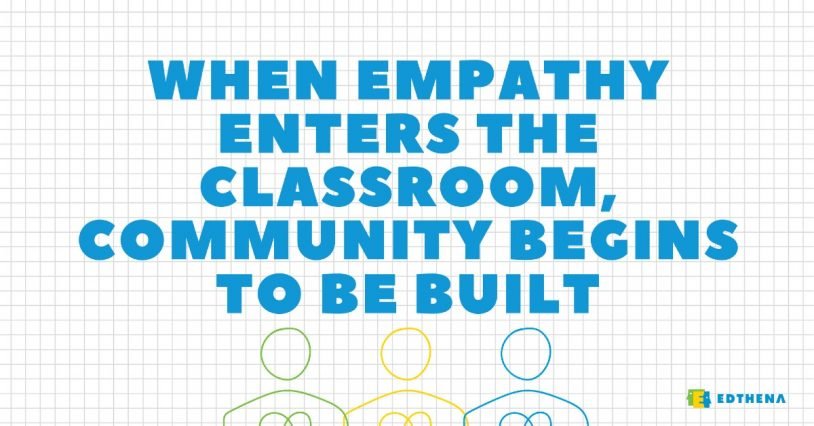Still Feeling Distant from Students? Become More Connected by Teaching with Empathy
- Distance learning doesn’t necessitate only online teaching
- Students need more opportunities to engage with learning
- Build classroom community by modeling and teaching with empathy
In this #PLtogether Lounge Talk, we talked with Nina Gilbert about teaching with empathy as it relates to distance teaching and cultural responsiveness. Over the years, Nina who has a doctorate in educational leadership, has taught all grade levels from kindergarten through higher education. Currently, Nina Gilbert is the Director of the Center for Excellence and Education at Morehouse College.
How culture fits into the classroom environment
No matter the physical or digital place a classroom now occupies, a teacher must work to create a safe culture and engaging learning opportunities. Whether that environment is a brick-and-mortar experience where people are separated by masks and face shields or consists of squares on a computer screen, Nina stated, “it has to be an emotionally safe space.” Distance teaching doesn’t have to feel distant.
 When educators do not create a safe space, students struggle. A safe environment enables students to be more social and feel connection, especially important now. This may look different from what teachers are used to: “shiny faces, fully dressed, in front of the camera at 8:00 and [zooming] all day” is neither effective nor realistic, Nina says. “If lecturing in front of the class did not work when we were all together, it is definitely not going to work now.” Teaching with empathy includes making sure students have more opportunities to fully engage.
When educators do not create a safe space, students struggle. A safe environment enables students to be more social and feel connection, especially important now. This may look different from what teachers are used to: “shiny faces, fully dressed, in front of the camera at 8:00 and [zooming] all day” is neither effective nor realistic, Nina says. “If lecturing in front of the class did not work when we were all together, it is definitely not going to work now.” Teaching with empathy includes making sure students have more opportunities to fully engage.
Identifying best practices for engagement
Nina encourages that distance teaching during COVID-19 is a chance to try new things and promote a learning culture. “Having breakout sessions, think-pair-shares, [going off to] work with the expectation that when we gather again, these will be your deliverables” are all ways to get students learning with peers and doing hands-on work.
Here, we learn the difference between online learning and distance learning. We may be distant from one another but “you can still give an assignment, a project, an activity… with the expectation that you complete this assignment and this project and come back ready to present.”
This form of distance teaching, where students are still in the driver’s seat of their own learning, provides them the opportunity to engage and create on their own and thereby actively tackle content. Identify new techniques for student engagement and take this time as an “opportunity to rethink how [you] engage students and give them exciting engaging activities and assignments.”
And if something doesn’t work for your students, try something else!
Empathy is key to emotionally safe classrooms
 Talking about culturally responsive teaching, Nina emphasized empathy. Regardless of background, you may not share the same lived experience as your students. Here is where teachers must think outside of the monolithic box, with an emphasis on being sure “to listen and listen to understand.”
Talking about culturally responsive teaching, Nina emphasized empathy. Regardless of background, you may not share the same lived experience as your students. Here is where teachers must think outside of the monolithic box, with an emphasis on being sure “to listen and listen to understand.”
When empathy enters the classroom, community begins to be built. Nina defines this as “a safe place for students to share their concerns, share their experiences, but with some clear guidelines and parameters.” For example, if discussing the current political climate, all students must feel heard and respected, no matter their or their families’ and community’s views.
It’s also crucial to check on students’ social and emotional well-being. From the loss of peer connection due to distance to loss of family members to COVID-19, students have a lot to unpack. Again, Nina states that classroom expectations may look different: “if a student doesn’t have his or her camera on, that’s okay. You don’t know what’s behind.”
With goals of a safe (both physically and emotionally) classroom space and increased student engagement, educators must set and model the tone they wish to see. Leading and teaching with empathy will enhance the connections for all of the above.

